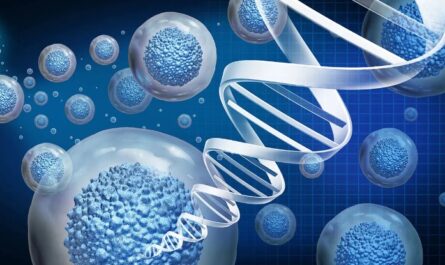
Chemotherapy uses anti-cancer drugs to destroy myelodysplastic syndrome (MDS) cells. Some chemotherapy drugs commonly used to Myelodysplastic Syndrome Treatment include:
Lenalidomide (Revlimid): This drug helps stimulate the immune system to recognize and attack MDS cells. It is often used in low-risk MDS to help the bone marrow produce more normal blood cells. Side effects can include fatigue, nausea, diarrhea and low blood counts.
Azacitidine (Vidaza): This drug works by changing the DNA of MDS cells to stop their growth and multiplication. It also helps the immune system recognize and destroy MDS cells. Azacitidine is commonly used for higher-risk MDS and may prolong survival time. Common side effects are nausea, diarrhea, fatigue, low blood counts and bruising or bleeding easily.
Decitabine (Dacogen): Like azacitidine, decitabine changes the DNA of MDS cells. It is also used for higher-risk MDS. Side effects are similar to azacitidine and include nausea, vomiting, diarrhea, fatigue and low blood counts.
Cytarabine (Ara-C): This chemotherapy drug interrupts cell growth in MDS cells. It is mainly used for higher-risk MDS or when other treatments stop working. Side effects can be nausea, vomiting, diarrhea, fatigue, hair loss and low blood cell counts.
While chemotherapy helps control MDS progression, it comes with side effects from killing fast-growing normal cells. Your doctor will weigh the risks and benefits of chemo based on your individual case and treatment goals.
Stem Cell Transplantation
A stem cell transplant replaces damaged blood-forming stem cells with healthy donor stem cells. There are two main types:
Allogeneic stem cell transplant uses stem cells from a donor whose tissue type closely matches the patient’s. This is often a brother or sister or volunteer unrelated donor. Risks are higher but it can offer the best chance at a cure for younger patients with higher-risk MDS.
Autologous stem cell transplant (using the patient’s own stem cells) removes stem cells prior to chemotherapy or radiation to wipe out the existing immune system. The stem cells are then given back to rebuild the blood and immune system. This option aims to gain remission before high-dose transplant-related therapy.
Major risks of transplantation include graft-versus-host disease where the donor immune cells attack healthy organs, serious infections from a weakened immune system, and relapse of MDS. Close monitoring during and after transplant is important.
Supportive Therapies
When MDS is lower-risk, supportive care aims to treat low blood cell count symptoms:
Blood transfusions provide red blood cells to treat anemia and reduce fatigue, shortness of breath or chest pain. Platelet transfusions prevent or treat bleeding caused by low platelet counts.
Iron chelation therapy removes excess iron built up from frequent transfusions which can damage organs. Medications like deferasirox (Exjade) are commonly used.
Antibiotics protect against infection risks from low white blood cell counts. Antiviral and antifungal drugs may also be used preventively.
Colony-stimulating factors, such as erythropoietin, help boost blood cell production and reduce need for transfusions. These come in shot or injection form.
Growth factors mimic natural substances that stimulate marrow stem cells. They includeGranulocyte colony-stimulating factor and Thrombopoietin receptor agonists.
Maintaining overall health through balanced nutrition, exercise as tolerated and stress reduction also supports one’s treatment outcomes and quality of life with MDS.
Clinical Trials
If standard treatment options do not control MDS signs and symptoms or come with lower success or intolerable side effects, enrollment in a clinical trial should be discussed.
Active clinical trials are exploring new combination therapies, monoclonal antibodies, hypomethylating agents and immune modulation approaches to both treat and potentially cure MDS. Some even target the genetic mutations driving certain MDS subtypes.
Joining a trial allows accessing cutting-edge therapies and contributing to future medical knowledge. However, risks and benefits of trial participation must be weighed carefully. Discuss all options openly with your care team.
Myelodysplastic Syndrome Treatment is Unique to Each Person
There is no single best treatment approach due to variable disease course and patient factors like age, fitness level and individual goals of care. An MDS specialist can help determine appropriate options based on your specific situation and preference.
Ask questions, understand expectations and be an active participant when making decisions about medications, procedures and goals of therapy. With today’s options, many can stabilize and extend life with MDS for years. Support groups also offer helpful advice from others managing this disease.
*Note:
1. Source: Coherent Market Insights, Public sources, Desk research
2. We have leveraged AI tools to mine information and compile it



